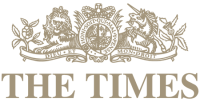13 Minutes
CONTENTS
Pathological or compulsive hair pulling, also known as trichotillomania, is a widespread yet underdiagnosed psychological disorder. Trichotillomania is a condition in which people feel compelled to pluck their hair out.
Trichotillomania is a behavioral condition that causes uncontrollable temptations to pluck one’s hair out. Trichotillomania affects about 1 percent of people in the US at some point in their lives. Shame and embarrassment are common side effects of this illness. When another individual learns about the condition, the embarrassment may become even worse. It’s possible that unintentionally fostering these sentiments of shame will lead to even more social isolation.
Read Also: Dermatillomania Luxury Inpatient Treatment
Many persons with trichotillomania are unaware that they have a disorder that may be diagnosed. They could just think of hair tugging as a nasty habit. Others may suffer from severe physical and mental issues. The majority of people take out their scalp hair. Some people, on the other hand, may pull hair from their eyelashes, beards, or eyebrows.
Some persons who suffer from trichotillomania eat their own hair. Trichophagia is the medical term for this disorder. It has the potential to induce serious gastrointestinal issues. Trichotillomania affects the majority of persons during their teens. Some of these persons may then battle with the disorder throughout adulthood, either continuously or occasionally.
The causes and symptoms of trichotillomania are discussed in this article, as well as the many treatment methods available.

FAQs
A UNIQUE METHOD
a successful and proven concept focusing on underlying causesLASTING APPROACH
0 Before
Send Admission Request
0 Before
Define Treatment Goals
1 week
Assessments & Detox
1-4 week
Psychological & Holistic Therapy
4 week
Family Therapy
5-8 week
Aftercare
12+ week
Refresher Visit
Mental Health Insights
latest news & research on Mental HealthWorld Mental Health Day
The theme for World Mental Health Day is “mental health in an unequal world,” which highlights the inequalities among people that come in the way of addressing mental health problems. As highlighted by the World Federation for Mental Health, these inequalities are with respect to gender, race, ethnicity, financial income, and sexual orientation.
read more
Statistics On Loneliness
London is the world's loneliest city, with 55 percent of its citizens reporting feelings of loneliness. With those figures in perspective, London would remain the loneliest city in the projected loneliness stats.
read moreAdrenaline Junkie
Adrenaline junkies are a unique breed of thrill-seekers who crave the rush of adrenaline that comes from high-risk activities such as skydiving, bungee jumping, and extreme sports
read moreSomatic Delusions
Somatic delusions are a form of mental illness that affects a person's ability to perceive their own body accurately.
read more

























































